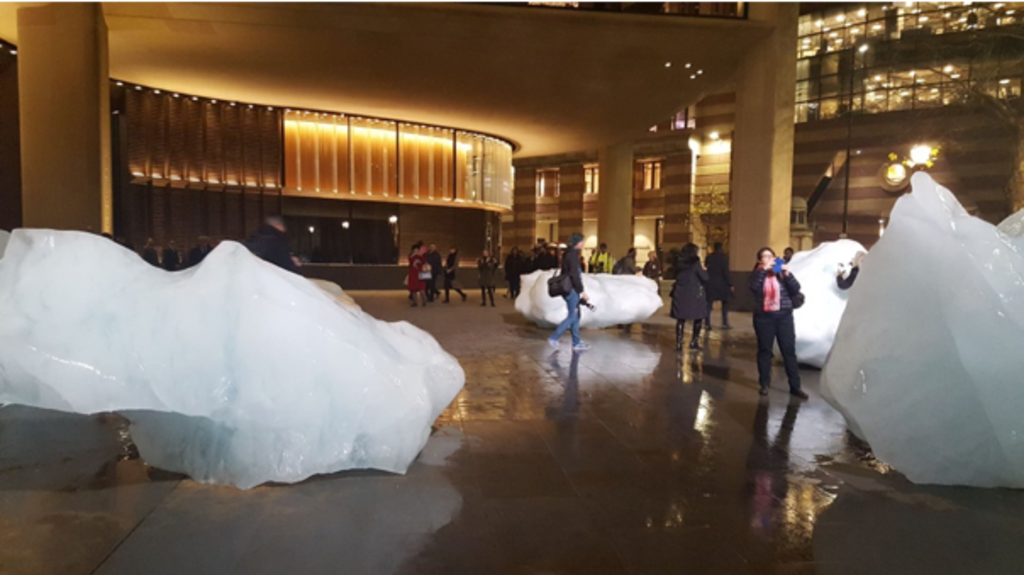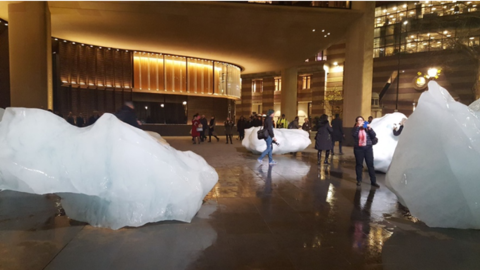Green is the New Black: the Rising Tide of Climate-Consciousness
11 January 2019 | By Emily Clarke

It’s an arresting sight: huge chunks of arctic ice stood melting into the polluted streets of Central London; disintegrating into the chill winter air.
Between 50,000 and 100,000 years old (compare that to the Ancient Egyptian civilisation being in existence only 5,000 years ago), ice blocks like these are melting every second in the frozen climes: hundreds of thousands of years of history lost forever – and causing our sea levels to rise to unsustainable levels
Olafur Eliasson’s temporary iceberg sculpture, Ice Watch London, opened to coincide with the recent Climate Change Conference (COP24) in Katowice, Poland, throwing the all-too-real concerns over our rapidly-heating planet into even sharper relief.
Yet it didn’t go unnoticed that COP24 took place in the country with Europe’s worst air: Poland is home to 36 of the EU’s 50 most-polluted cities – and Katowice is one of them. Here – in the heart of coal country – when the temperature drops, coal is piled into furnaces and cities start sending alerts advising residents to stay inside because the air is so toxic.[1]
Contentious sponsorship
Neither did it miss the public’s attention that the conference was sponsored by two power-generating companies and Europe’s biggest producer of coking coal. Likened to a coal trade fair rather than a climate convention, it’s beyond ironic that COP24 promoted the biggest single source of carbon dioxide emissions from human activity. In this context, Eliasson’s artwork comes across as even more tragic.
Contentious sponsorship, however, is not alien to the art world. Only a few months ago, Shell – one of the ‘supermajor’ oil and gas companies – ended its sponsorship of the National Gallery, following years of environmental protests. Two years earlier, BP terminated its 27-year sponsorship of Tate, after thousands of people had called on the gallery to end the relationship on ethical grounds. Both companies had only invested paltry amounts for millions of pounds worth of advertising revenue: the National Gallery, for example, is rumoured to have only received £35,000 a year, despite being worth £14.3m. Meanwhile, BP splashed its branding across the Tate Gallery’s walls for a meagre £350,000 a year – less than 0.5% of the charity’s income. The choice seems nonsensical: redivert sponsorship from an unpopular company, and improve your reputation in the art world, which often deals with social issues.
Generation green
Millennials are coming of age in one of the toughest (economic) climates in a century. Faced with a warming planet and political uncertainty, more than 70% are still willing to pay more for products and services from companies who are committed to positive social and environmental impact.[2]Our future will inevitably see the growth of more environmentally-conscious brands – in fact, 88% of business school students think environmental and social issues are priorities in business; and start-ups are increasingly focusing on eco-friendly products.[3]Veganism – seen by many as the single biggest way to reduce your carbon footprint[4]– has risen by 360% in the UK. Green is the new black.
There will be no shortage of climate-conscious brands as we look towards the future. Amidst the uncertainty of what lies ahead as we enter a new year, it is undeniable that the environment will be a key concern for a generation who see themselves as its custodians. Politicians, charities and corporates alike must be ready to navigate this rising tide of environmentalism – before it is too late.

